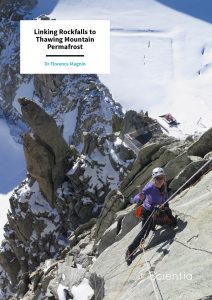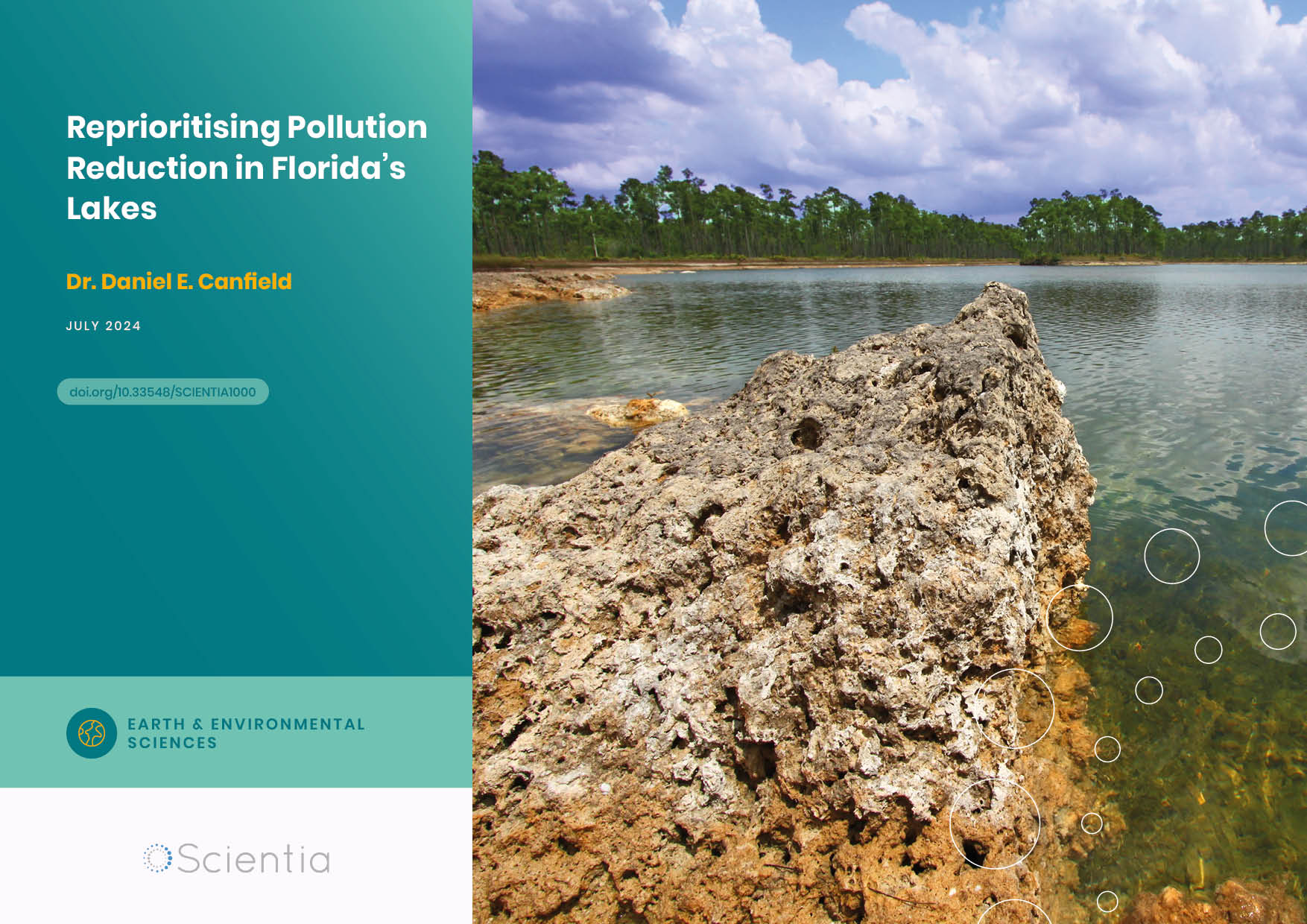Dr Florence Magnin – Linking Rockfalls to Thawing Mountain Permafrost
Permafrost is key to maintaining the stability of steep mountain slopes. Yet as the climate warms, this frozen ground is becoming increasingly prone to thawing. In some cases, these events can trigger cascades of loose rock, with potentially devastating consequences for surrounding communities. Using a combination of computer modelling, and daring field experiments, Dr Florence Magnin at the Laboratory of Environments, Dynamics and Mountain Territories (EDYTEM) aims to better predict when and where these rockfalls are likely to occur, and how the state of mountain permafrost will evolve in the future.
Permafrost
Even at the height of summer, temperatures in Earth’s coldest regions will very rarely rise above freezing. In these regions, any water in the ground will remain permanently frozen, and will form strong bonds with solid materials including rocks, soil, and sand. Known as permafrost, this material can extend for over a kilometre beneath Earth’s surface, and has a strong impact on the geology of these regions.
Today, permafrost has been widely studied in the vast expanse of the Arctic, and researchers can make reasonable predictions of how it will evolve as Earth’s climate warms. However, in freezing mountainous regions, intricate topographies and microclimates mean that permafrost is far more discontinuous, making it far more difficult to study. As a result, its evolving characteristics have remained far more elusive until recently.
Less than 20 years ago, scientists started to investigate permafrost within rock walls, which is a particular form of mountain permafrost. ‘This type of permafrost has only been studied since 2003, following the heat wave that struck the European Alps,’ describes Dr Florence Magnin, of EDYTEM Laboratory. ‘During this time, a remarkable number of rockfalls occurred in high mountains, many of them showing ice in their scars.’
In the years since this event, the likelihood of intense, long-lasting heatwaves has increased, and as Earth’s climate continues to warm, this trend is only expected to accelerate throughout the century. Global heating is also causing the steady increase of temperatures deep underground.
Through her research, Dr Magnin aims to gain a better understanding of how mountain permafrost is changing – through a combination of cutting-edge computer models, and field studies that take her to some of the most extreme environments on Earth.
Consequences of Thawing Permafrost
At high altitudes, permafrost plays an integral role in maintaining mountain topographies. By holding rocks together, it allows steep slopes and cliffs to remain stable, even on geological timescales. However, when permafrost thaws, the bonds between ice and rock begin to deteriorate, until steep slopes are no longer mechanically stable under their own sheer weight. As this happens, up to millions of cubic metres of rock may suddenly collapse into more stable configurations.
In some cases, this material can fall into meltwater lakes, which occupy the deep valleys carved out by glaciers over many millions of years. These events displace vast volumes of water in almost an instant, producing tsunami waves which can go on to devastate areas surrounding the lake and beyond. Clearly, rockfalls and rock avalanches can pose serious threats to any people or communities in the vicinity, making them all the more important to study.
‘Today, rockfalls and rock avalanches seem to be increasing in high mountain areas of cold regions worldwide,’ Dr Magnin illustrates. ‘These events sometimes have dramatic consequences, including infrastructure destabilisation or destruction, threat for mountaineers, and the triggering of mega-tsunamis in glacial lakes or fjords.’ These events are now being seen in mountainous regions across the world – from the European Alps, to the Andes and Himalayas. As a result, Dr Magnin’s research will provide vital guidance to mountain communities who wish to predict when and where rockfalls are most likely to occur as the climate warms.
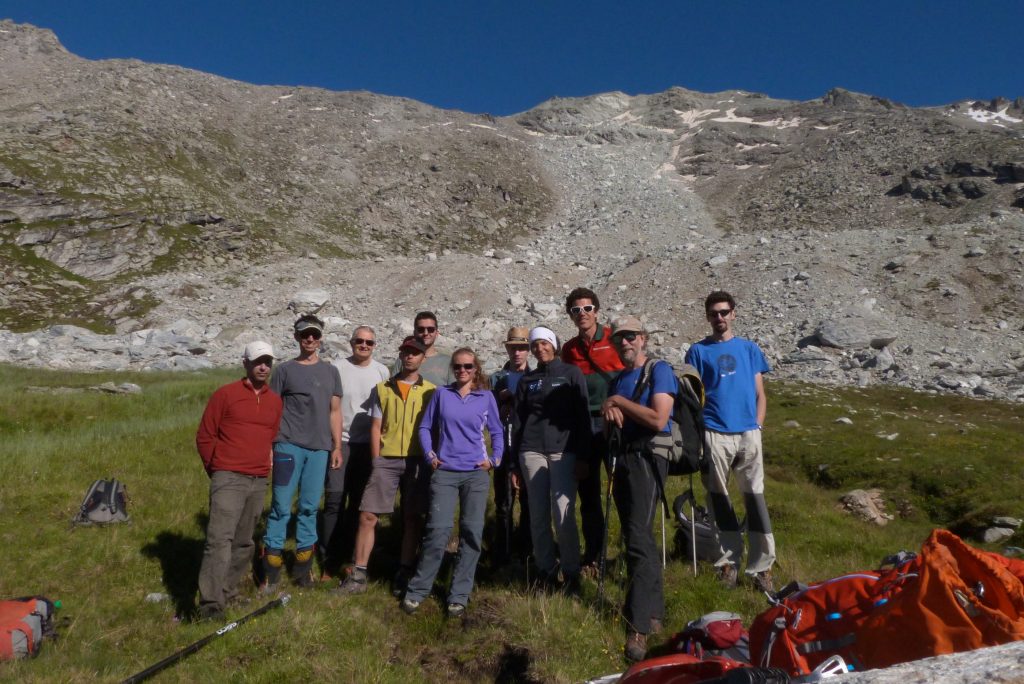
Building on Lab Experiments
Since 2003, experiments in the lab have provided researchers with important insights into the physical properties of mountain permafrost, and how they will change as the ground thaws. These studies have confirmed a clear negative relationship between the strength of permafrost bedrock, and its rising temperature. They have also shown how this behaviour is affected by the heat transferred by water that has already melted.
Although their results have now been supported by observations in the field, these studies haven’t been extensive enough to explain or predict the onset of real rockfall events. To overcome this challenge, Dr Magnin and her colleagues have set out several goals for investigating permafrost on real mountain slopes.
‘We try to determine where this invisible permafrost exists, to understand how it responds to climate signals and changes, and to understand its role in steep rock slope destabilisations,’ Dr Magnin explains. ‘This allows us to better assess areas and periods at risk, and also to understand how permafrost shapes the landscape.’ From these assessments, Dr Magnin also aims to determine which specific areas are at a greater risk of experiencing future rockfalls by considering environmental factors, including the retreat of glaciers.
Daring Field Experiments
Achieving these goals has required a feat of physical endurance for Dr Magnin and her team. Not only is mountain permafrost hidden underground in discontinuous patches, making the validity of existing permafrost maps uncertain; they are often also located in remote and inaccessible regions. As a result, they require expert mountaineering skills to reach them, and carefully coordinated logistics are essential to producing reliable results.
Dr Magnin hasn’t been deterred by such challenging circumstances. ‘So far, we have achieved the assessment and mapping of permafrost distribution in the steep slopes of the Mont Blanc massif, Norway, and currently, across the entire French Alps,’ she recounts. ‘We have performed some of the first systematic geoelectrical soundings in steep rock faces to detect permafrost occurrences and validate existing maps.’
These sounding experiments involve boring holes into the permafrost, placing electrodes into them, and then measuring the degree to which the ground resists the electrical current passing between the electrodes. Since this resistance will vary depending on whether the current passes through rock, ice, or liquid water, the technique allows the researchers to build up a precise picture of permafrost locations, and its properties at different depths, as well as any variations with warmer temperatures.
In Norway, measurements across 25 rock slope sites, spread across almost 1,000 kilometres of the mainland, provide a detailed picture of where discontinuous permafrost occurs. In Southern Norway, the researchers showed that this ground remains frozen above altitudes ranging from 1,300 to 1,700 metres – with unfrozen conditions existing higher up on south-facing slopes. At the same time, the studies also showed that mountain permafrost has been in retreat over the past two decades. On the Mont Blanc massif, it has disappeared on southerly faces up to altitudes of 3,300 metres; and warmed to close to 0°C at altitudes as high as 3,850 metres.
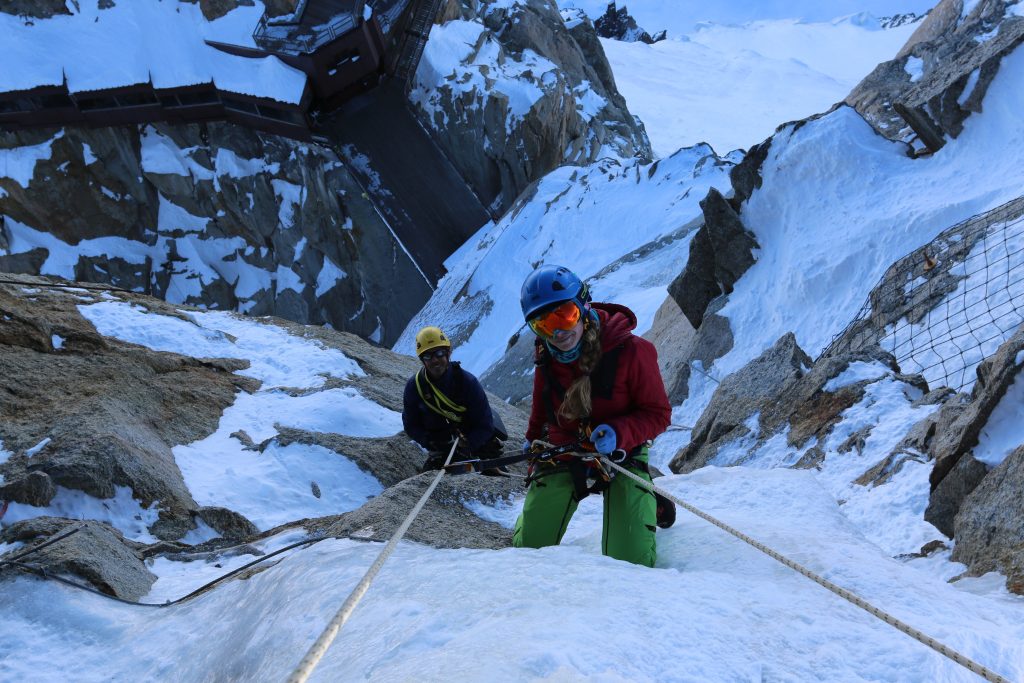
Modelling the Evolving Permafrost
Building on the discoveries made through these experiments, Dr Magnin and her colleagues aim to assess how mountain permafrost will evolve as the Earth’s climate warms. Subsequently, they aim to offer better predictions of when and where rockfalls will occur. In parallel with field studies, a knowledge of this evolution requires the use of accurate computer models, which use the latest theories to predict how permafrost thawing will occur at specific sites, and at varying depths.
Dr Magnin has contributed to the development of a modelling approach that can predict current and future responses of rock slopes to rising temperatures. The approach is now allowing researchers to track this evolution from as early as the Little Ice Age – a cool period lasting from around the 16th to 19th centuries – to the end of the 21st century.
‘The model can better determine the role of critical parameters for permafrost responses and steep rock slopes to destabilisations, such as snow accumulations and water infiltrations,’ Dr Magnin describes. In turn, by incorporating the data gathered during their field experiments, the technique will allow the researchers to study permafrost processes that have led to real rockfall events in unprecedented detail.
Predicting Disasters
In their latest study, Dr Magnin’s team used their modelling approach to simulate the onset of 209 real rockfalls, recorded in the Mont Blanc massif between 2007 and 2015. ‘These rockfalls were a direct reaction to higher than usual temperatures at depth of failure,’ Dr Magnin describes. ‘This generally results from spells of extraordinary high temperatures at the rock slope surface, lasting over one month.’
In the study, the researchers simulated varying bedrock temperatures at each rockfall site, and then compared the occurrence of rockfalls with the permafrost distributions observed in their field studies. For all of these events, Dr Magnin’s team consistently found thawing permafrost, with temperatures close to 0°C, at depths greater than 6 metres. Each of these cases was associated with prolonged spells of warm weather at the surface – confirming previous predictions that areas of warm permafrost are particularly prone to rockfalls, and that these events are a direct response to high bedrock temperatures.
Researchers now widely predict a rapid retreat of mountain permafrost in the near future. Dr Magnin’s results clearly show that this retreat will likely be accompanied with an uptick in rockfall events. With an improved understanding of where discontinuous permafrost is located, and how it will evolve in the near future, she ultimately hopes that local communities will be far better prepared for their potentially devastating consequences.
SHARE
DOWNLOAD E-BOOK
LISTEN TO THE AUDIO
REFERENCE
https://doi.org/10.33548/SCIENTIA782
MEET THE RESEARCHER
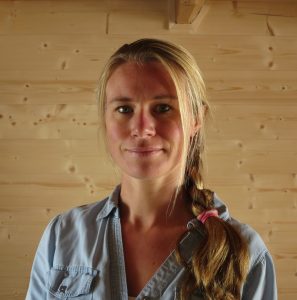
Dr Florence Magnin
EDYTEM Laboratory
CNRS – Savoie Mont Blanc University
Le Bourget du Lac
France
Dr Florence Magnin completed her PhD in 2015, for a thesis entitled ‘Distribution and characterisation of the permafrost in the Mont Blanc rock slopes’. After working as a postdoctoral researcher at the University of Oslo for two years, she started her current position as a researcher at the Environments, Dynamics and Mountain Territories (EDYTEM) Laboratory of CNRS and Savoie Mont Blanc University in 2019. Dr Magnin conducts world-leading research into the permafrost of steep slopes on high mountains and at high latitudes; the thermal and hydrological properties of permafrost walls; and changes to mountain landscapes triggered by permafrost thawing. Using the combined techniques of geoelectric sounding and computer modelling, Dr Magnin has carried out ground-breaking field experiments in both Norway and the French Alps.
CONTACT
E: florence.magnin@univ-smb.fr
W: https://edytem.cnrs.fr/pages-personnelles/florence-magnin/
KEY COLLABORATORS
Ludovic Ravanel, Philip Deline, Xavier Bodin, Emmanuel Malet, Jean-Yves Josnin, André Revil, François Nicot (EDYTEM Lab., CNRS – Savoie Mont Blanc University, France)
Philippe Schoeneich (Pacte Lab. CNRS – Grenoble Alpes University, France)
MGeo3 team (INRAE – University Grenoble Alpes)
Katy Medina Marcos and Edwin Loarte Cadenas (INAIGEM and UNASAM, Peru)
Ibai Rico (University of the Basque Country, Spain)
Bernd Etzelmüller and Sebastian Westermann (Oslo University, Norway)
Christophe Lambiel (Lausanne University, Switzerland)
Susan Conway (CNRS – Nantes University, France)
Benjamin Pohl (CRC Lab., CNRS – Bourgogne Franche-Comté University, France)
National Park of Mercantour (France)
National Park of Les Ecrins (France)
Mountain Terrain Restauration Service (France)
FUNDING
Agence National de la Recherche
Agence Nationale de la Recherche et Technologie
Ministère de la Transition Ecologique et Solidaire
Alpes-Ingé (http://www.alpes-inge.com/en/)
Communauté de Communes de la Vallée Chamonix-Mont Blanc
FURTHER READING
A Legay, F Magnin, L Ravanel, Rock temperature prior to failure: Analysis of 209 rockfall events in the Mont Blanc massif (Western European Alps), Permafrost and Periglacial Processes, 2021, 32, 520.
F Magnin, W Haeberli, A Linsbauer, P Deline, L Ravanel, Estimating glacier-bed overdeepenings as possible sites of future lakes in the de-glaciating Mont Blanc massif (Western European Alps), Geomorphology, 2020, 350, 106913.
F Magnin, B Etzelmüller, S Westermann, K Isaksen, P Hilger, RL Hermanns, Permafrost distribution in steep rock slopes in Norway: measurements, statistical modelling and implications for geomorphological processes, Earth Surface Dynamics, 2019, 7, 1019.
F Magnin, JY Josnin, L Ravanel, J Pergaud, B Pohl, P Deline, Modelling rock wall permafrost degradation in the Mont Blanc massif from the LIA to the end of the 21st century, The Cryosphere, 2017, 11, 1813.
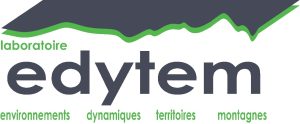
REPUBLISH OUR ARTICLES
We encourage all formats of sharing and republishing of our articles. Whether you want to host on your website, publication or blog, we welcome this. Find out more
Creative Commons Licence (CC BY 4.0)
This work is licensed under a Creative Commons Attribution 4.0 International License. 
What does this mean?
Share: You can copy and redistribute the material in any medium or format
Adapt: You can change, and build upon the material for any purpose, even commercially.
Credit: You must give appropriate credit, provide a link to the license, and indicate if changes were made.
SUBSCRIBE NOW
Follow Us
MORE ARTICLES YOU MAY LIKE
Dr Robert Larkin | Cultivating Change to Improve Soil Health and Increase Potato Yield
Environmental quality and food production are facing the pressing challenges of climate change and global population growth. Dr Robert Larkin from the United States Department of Agriculture-Agricultural Research Service (USDA-ARS) and a team of plant scientists developed and tested a range of crop management systems to help overcome these compounding challenges. Their work is improving soil health and increasing the yield of potato crops, contributing to the future food security of nations.
Dr Arne Stensvand | Thermotherapy: Effective Disease and Pest Management Without Chemicals
Dr Arne Stensvand and his team at the Norwegian Institute of Bioeconomy Research are developing physical methods of pest reduction in plants. The team is specifically interested in strawberry plants, for which pest management is vital for crop success. They are pioneering thermotherapy as a heat treatment method to provide an environmentally effective and economically sound non-chemical approach to pest management.
Dr. Daniel Canfield | Reprioritising Pollution Reduction in Florida’s Lakes
Florida’s landscape is dotted with thousands of lakes that reflect regional geology, topography and anthropogenic activities. Phosphorus and nitrogen are critical nutrients for maintaining the wide range of biological production expressed across Florida, but excessive inputs of these nutrients due to past human activities impair many waters. There has been a long history of work aiming to address associated water quality pressures, and Dr. Daniel Canfield at the University of Florida has been at the centre of these efforts for over 40 years. Now, with the correction of point-source nutrient inputs, Dr. Canfield proposes that holistic lake management, including the integration of in-lake management strategies with a focus on organic sediment removal, should be much more prominent on the US government’s agenda to provide faster restoration of stakeholders’ lake usability.
Dr Jon Tore Lieng | Dynamically Installed Anchors for Floating Offshore Turbines
Effectively harnessing offshore wind presents a valuable opportunity to increase energy supplies. Floating wind turbines present several advantages over traditional fixed turbines in more shallow waters. Dr Jon Tore Lieng from Deep Sea Anchors and colleagues have developed a type of dynamically installed anchor to hold the structures in place while reducing both the costs and complexity associated with installation where cohesive seabed sediments are realised.

